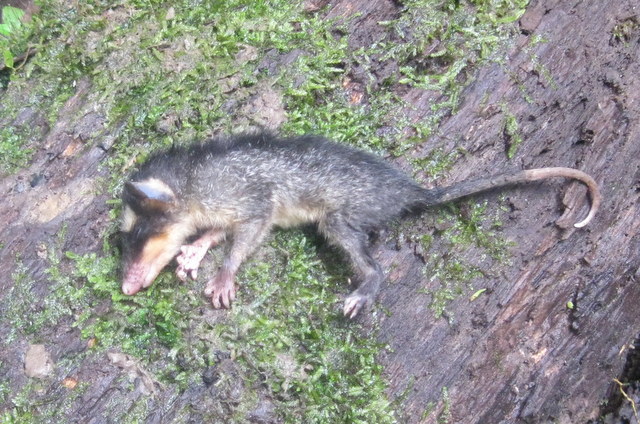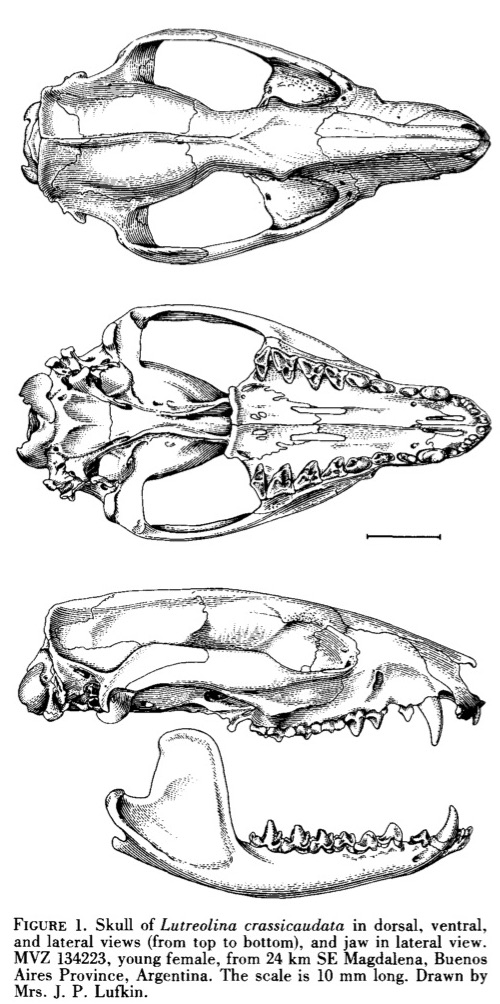|
Mammals Of Brazil
Brazil has the largest mammal diversity in the world, with around 711 described species and more likely to be discovered. According to the International Union for Conservation of Nature, 66 of these species are endangered, and 40% of the threatened taxa belong to the primate group. The following tags are used to highlight each species' conservation status as assessed by the International Union for Conservation of Nature: Some species were assessed using an earlier set of criteria. Species assessed using this system have the following instead of least concern categories: Infraclass: Metatheria Order: Didelphimorphia * Family: Caluromyidae ** Genus: '' Caluromys'' *** Brown-eared woolly opossum, ''C. lanatus'' *** Bare-tailed woolly opossum, ''C. philander'' * Family: Didelphidae ** Genus: ''Caluromysiops'' *** Black-shouldered opossum, ''Caluromysiops irrupta'' ** Genus: ''Glironia'' *** Bushy-tailed opossum, ''Glironia venusta'' ** Genus: '' Chironectes'' *** Wat ... [...More Info...] [...Related Items...] OR: [Wikipedia] [Google] [Baidu] |
Brazil
Brazil, officially the Federative Republic of Brazil, is the largest country in South America. It is the world's List of countries and dependencies by area, fifth-largest country by area and the List of countries and dependencies by population, seventh-largest by population, with over 212 million people. The country is a federation composed of 26 Federative units of Brazil, states and a Federal District (Brazil), Federal District, which hosts the capital, Brasília. List of cities in Brazil by population, Its most populous city is São Paulo, followed by Rio de Janeiro. Brazil has the most Portuguese-speaking countries, Portuguese speakers in the world and is the only country in the Americas where Portuguese language, Portuguese is an Portuguese-speaking world, official language. Bounded by the Atlantic Ocean on the east, Brazil has a Coastline of Brazil, coastline of . Covering roughly half of South America's land area, it Borders of Brazil, borders all other countries and ter ... [...More Info...] [...Related Items...] OR: [Wikipedia] [Google] [Baidu] |
Caluromysiops
The black-shouldered opossum (''Caluromysiops irrupta''), also known as the white-eared opossum, is an opossum known from western Brazil and southeastern Peru. It was first described by Colin Campbell Sanborn, curator of Field Museum of Natural History, in 1951. The black-shouldered opossum is characterized by a gray coat, gray underbelly, and broad black stripes that extend from the forefeet, meet on the shoulders, run along the midline of the back and then split into parallel stripes that run down the hind feet. Little is known of the behavior of the black-shouldered opossum. It is nocturnal and arboreal. It is known to feed on fruits and rodents. The opossum inhabits humid forests. The IUCN classifies it as least concern. Taxonomy The black-shouldered opossum is the sole member of ''Caluromysiops'', and is placed in the family Didelphidae. No subspecies are recognized. The cladogram below, based on a 2016 study, shows the phylogenetic relationships of the brown-eared wooll ... [...More Info...] [...Related Items...] OR: [Wikipedia] [Google] [Baidu] |
Anderson's Four-eyed Opossum
Anderson's four-eyed opossum (''Philander andersoni'') is an opossum species from South America. It is found in Brazil, Colombia, Ecuador, Peru and Venezuela. Its dorsal fur is dark, with a black stripe, about 3–4 cm wide, going vertically down the midline of its back. Its dorsal fur is short, about 10 mm long. Its ventral fur is dark gray, but still distinctly lighter than the sides and dorsum. Its tail is furred for the first (approximately) 18% of its length, going from the base to the tip. Its species name In taxonomy, binomial nomenclature ("two-term naming system"), also called binary nomenclature, is a formal system of naming species of living things by giving each a name composed of two parts, both of which use Latin grammatical forms, altho ... "''andersoni''" was chosen to honor American scientific collector Malcolm Playfair Anderson. References Natureserve.org Opossums Marsupials of Brazil Marsupials of Colombia Marsupials of Ecuador Marsupial ... [...More Info...] [...Related Items...] OR: [Wikipedia] [Google] [Baidu] |
Gray And Black Four-eyed Opossum
The nine species in the genus ''Philander'', commonly known as gray and black four-eyed opossums, are members of the order Didelphimorphia. Mature females have a well-developed marsupium. The tail appears to be hairless except for the proximal (closest to the body) 5 or 6 cm, which has a few long hairs. The tail is slightly longer than the head-and-body length, and it is black for the proximal one half to two thirds of its length. The genus is closely related to ''Didelphis'' but the species of ''Philander'' are smaller than those of ''Didelphis''. The genus formerly included ''Metachirus nudicaudatus'', but this species lacks a pouch and so is now considered a separate genus. The common name comes from the white spots above the eyes, which can appear from a distance to be another set of eyes. Species *'' Philander andersoni'' - Anderson's four-eyed opossum *'' Philander canus'' - Common four-eyed opossum *'' Philander deltae'' - Deltaic four-eyed opossum *'' Philander m ... [...More Info...] [...Related Items...] OR: [Wikipedia] [Google] [Baidu] |
Big Lutrine Opossum
The big lutrine opossum (''Lutreolina crassicaudata''), also called little water opossum, thick-tailed opossum and coligrueso, is a long-tailed, otter-like mammal native to grasslands of South America. It generally lives near water and is active at night, dawn or dusk. It eats mice, insects and crabs. Like all opossums, it is a marsupial and carries its young in a pouch. Description The big lutrine opossum ("lutrine" means "otter-like" and "crass" meaning "thick, fat" and "cauda" meaning "tail") is a very peculiar opossum, having a long weasel-like body, short legs, small rounded ears, and dense reddish or yellowish fur. Nocturnal and crepuscular, they generally live in grasslands and savannas near water. They are terrestrial but are excellent swimmers and climbers. Distribution and habitat The big lutrine opossum is distributed in Brazil, Argentina, Bolivia, Uruguay, Paraguay, Colombia and Guyana. Populations in the two last countries are isolated from the populations of al ... [...More Info...] [...Related Items...] OR: [Wikipedia] [Google] [Baidu] |
Lutreolina
''Lutreolina'' is a genus of opossum found in South America. Both extant species in this genus are known as lutrine opossums. They have an otter-like body plan and occasionally semiaquatic tendencies, hence the genus name ''Lutreolina'', which is Latin Latin ( or ) is a classical language belonging to the Italic languages, Italic branch of the Indo-European languages. Latin was originally spoken by the Latins (Italic tribe), Latins in Latium (now known as Lazio), the lower Tiber area aroun ... for "otter-like". Formerly, only one species, the big lutrine opossum (previously known as just the lutrine opossum) was recognized, but a 2014 study described a second species, '' Lutreolina massoia'', on genetic and morphological grounds. There are also two fossil species recognized, '' Lutreolina biforata'' (formerly placed in '' Hyperdidelphys'') and '' Lutreolina materdei''. References {{Taxonbar, from=Q16335775 Marsupial genera Opossums Marsupials of South America Ta ... [...More Info...] [...Related Items...] OR: [Wikipedia] [Google] [Baidu] |
Guianan White-eared Opossum
The Guianan white-eared opossum (''Didelphis imperfecta'') is an opossum species from South America. It is found in Brazil, Venezuela, Guyana, Suriname, and French Guiana. Possessing the smallest distribution area of its genus, this species is endemic to the Guiana Shield and can inhabit elevations ranging from 80 to 2,250 meters above sea level in the region's lowland forests. This species, together with the Andean white-eared opossum (''D. pernigra''), was separated from the white-eared opossum The white-eared opossum (''Didelphis albiventris''), known as the timbu and cassaco in northeast Brazil, saruê and sariguê in Bahia, micurê and mucura in northern Brazil and comadreja overa in Argentina, is an opossum species found in Argentin ... (''D. albiventris'') in 2002, having been included with that species in 1993. References Opossums Marsupials of Brazil Mammals of French Guiana Mammals of Guyana Mammals of Suriname Marsupials of Venezuela Mammals describe ... [...More Info...] [...Related Items...] OR: [Wikipedia] [Google] [Baidu] |
Big-eared Opossum
The big-eared opossum (''Didelphis aurita''), also known as a saruê, or the gambá, is an opossum species from South America. It is found in Argentina, Brazil and Paraguay. This species, which was considered a population of the common opossum (''D. marsupialis'') for some time, was originally described as ''D. azarae'' by Coenraad Jacob Temminck in 1824, but this name was incorrectly given to the white-eared opossum The white-eared opossum (''Didelphis albiventris''), known as the timbu and cassaco in northeast Brazil, saruê and sariguê in Bahia, micurê and mucura in northern Brazil and comadreja overa in Argentina, is an opossum species found in Argentin ... (''D. albiventris'') for over 160 years. As such, the name ''azarae'' has been abandoned. Due to carrying offspring, female big-eared opossums tend to stay in smaller areas and reduce their movements. References External links facts and pictures at Animal Diversity WebDiogo Loretto, & Marcus Vinícius Vieira. (200 ... [...More Info...] [...Related Items...] OR: [Wikipedia] [Google] [Baidu] |
White-eared Opossum
The white-eared opossum (''Didelphis albiventris''), known as the timbu and cassaco in northeast Brazil, saruê and sariguê in Bahia, micurê and mucura in northern Brazil and comadreja overa in Argentina, is an opossum species found in Argentina, Bolivia, Brazil, Paraguay, and Uruguay. It is a terrestrial animal, terrestrial and, sometimes, arboreal animal, and a habitat generalist, living in a wide range of different habitats. For some time, this species was incorrectly known by the name ''D. azarae'', correctly applied to the big-eared opossum. This led to ''azaraes discontinuation as a species name. From 1993 until 2002, this species also included the Guianan white-eared opossum (''D. imperfecta'') and the Andean white-eared opossum (''D. pernigra'') as subspecies. It is the team mascot of Clube Náutico Capibaribe, a Brazilian football team from Recife, Pernambuco. Description The white-eared opossum is about one to three pounds in weight and has black and grey fur, with ... [...More Info...] [...Related Items...] OR: [Wikipedia] [Google] [Baidu] |
Didelphis
''Didelphis'' is a genus of New World marsupials. The six species in the genus ''Didelphis'', commonly known as Large American opossums, are members of the ''opossum'' order (biology), order, Didelphimorphia. The genus ''Didelphis'' is composed of cat-sized omnivorous species, which can be recognized by their prehensile tails and their tendency to feign death when cornered. The largest species, the Virginia opossum (''Didelphis virginiana''), is the only marsupial to be found north of Mexico. The Virginia opossum has opposable toes on their two back feet. One of the synapomorphies of this genus is the Hypertrophy, hypertrophied spinous processes of the cervical vertebrae, which also interlock. As a result, this prevents and movement of the neck. The purpose of this is not yet fully understood. Phylogeny Cladogram of living large American opossums, the genus ''Didelphis'': Species References Opossums Marsupial genera Taxa named by Carl Linnaeus {{marsupial- ... [...More Info...] [...Related Items...] OR: [Wikipedia] [Google] [Baidu] |
Water Opossum
The water opossum (''Chironectes minimus''), also locally known as the yapok (), is a marsupial of the family Didelphidae.* It is the only monotypic species of its genus, ''Chironectes''. This semiaquatic creature is found in and near freshwater streams and lakes from Mexico through Central and South America to Argentina and is the most aquatic living marsupial (the lutrine opossum also has semiaquatic habits). It is also the only extant marsupial species in which both sexes have a pouch. The now extinct thylacine, commonly referred to as the Tasmanian tiger, also exhibited this trait. The local name for the water opossum, "yapok", may come from the name of the Oyapock River in French Guiana. Physical appearance The water opossum is small, measuring long, with a long tail. The fur is in a marbled grey and black pattern, while the muzzle, eyestripe, and crown are all black. A light band runs across the forehead anterior to the ears, which are rounded and hairless. There are ... [...More Info...] [...Related Items...] OR: [Wikipedia] [Google] [Baidu] |


